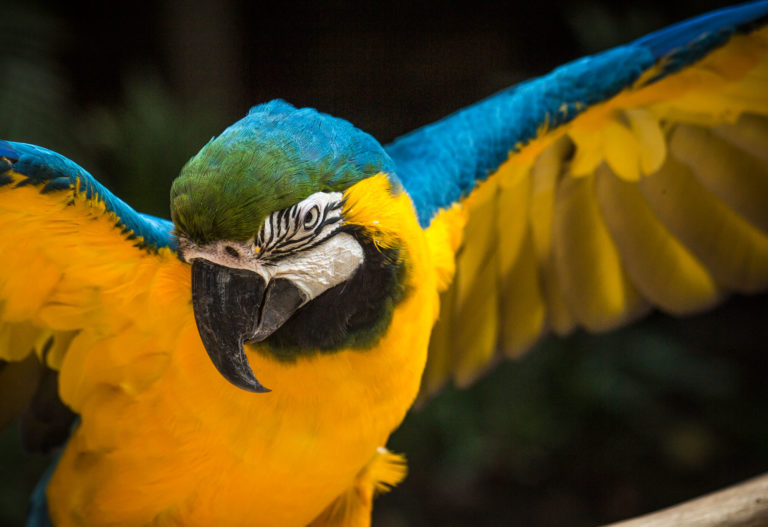Blue-and-yellow Macaw Ara ararauna
Taxonomy
Scientific name:
Ara ararauna
Family:
Psittacidae
Genus:
Ara
Species:
Ararauna
Common names:
Blue and gold macaw, blue and yellow macaw
Biology
Morphology:
Blue-and-yellow macaws are 81 to 91.5 cm long, weigh 0.9 to 1.5 kg, and have a wing span of 104 to 114 cm. They are vibrantly colored, with blue on their backs and wings and yellow underparts. Their under-wing coverts and breast are yellow-orange and they have black beaks, throat, and legs. Their eyes are yellow and their facial area consists of bare white skin with several black feather lines around their eyes.
Reproduction:
Blue-and-yellow macaws are monogamous and mate for life. Their breeding season is during the first half of the year. Nests are found in cavities high up in tall trees. Females lay 2 to 3 eggs and incubate them for 24 to 28 days. Within 3 months fledglings become independent.
Diet:
Blue-and-yellow macaws mainly eat seeds, nuts, and fruits. In some cases, they consume clay found at riverbanks to digest the toxins from unripe seeds that they may have ingested.
Ecology
Range:
Blue-and-yellow macaws can be found in South America from Venezuela to Brazil, Bolivia, Colombia and Paraguay. They are restricted to Panama in Central America.
Habitat:
Blue-and-yellow macaws are found throughout subtropical and tropical forests, woodlands, and savannas.
Threats
llegal traffic for pet trade. IUCN Red List: Low Concern.

